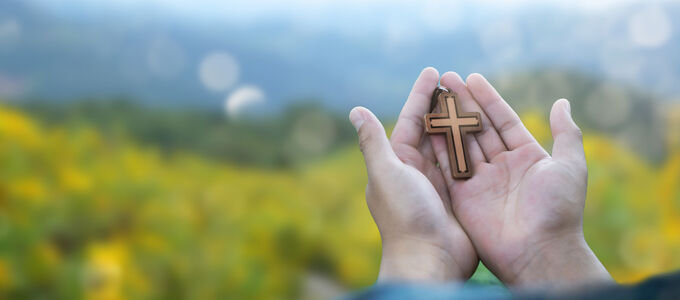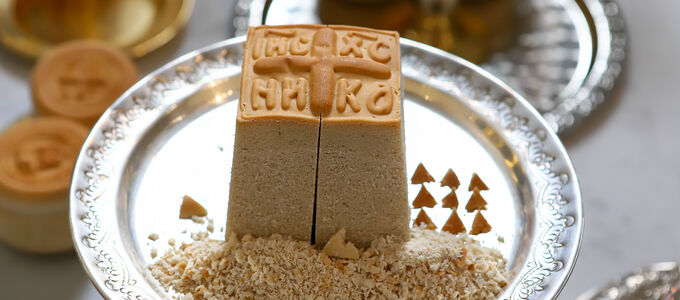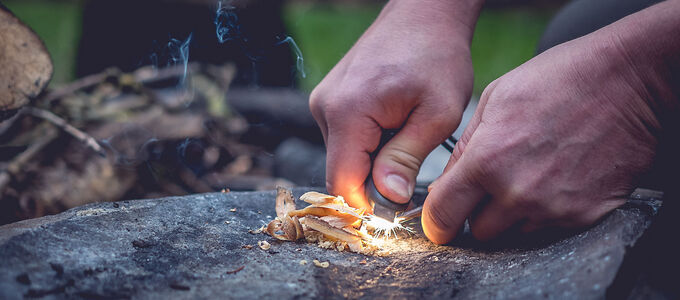
Are you serious, Leonardo? Dinner rolls? The bread on the menu of Da Vinci’s famous painting of Jesus’ Last Supper does not quite correspond to the historical reality. And the whole question of what kind of bread was served at the Last Supper is already tricky enough. Nevertheless, let us attempt a foray…
This much is certain: in ancient times, Christians served everyday bread on the Lord’s table—sometimes in the form of a wreath or as a braid, but most often as a round loaf with cross notches. Owing to the four incisions on the top, the pastry was called panis quadratus.
Change came slowly, and eventually took the form of a hard kind of flatbread: first in the Syrian Church, then in the Armenian, and finally in the Latin Church—in the fifth, sixth, and ninth centuries, respectively. It was Archbishop Hrabanus Maurus who made the breakthrough in what was later to be known as the Roman Catholic Church in 819.
As one of the masterminds of the Carolingian Renaissance, the universal scholar paid special attention to the Bible. It was there that he found his recipe for the correct communion bread. Yet the soon-to-be Orthodox Eastern Church stuck to its tried and true soft loaves—and was also able to justify its choice on the basis of Holy Scripture. How could this be?
A matter of timing
Everything depends on the day we ascribe to the Last Supper of Jesus. The gospels according to Matthew, Mark, and Luke mention the evening preceding the Jewish Feast of Passover. And at the Passover meal, the participants would definitely have passed around flat, hard, unleavened bread. This was intended to recall the exodus of the people of Israel from Egypt. After all, the exodus would have been so rushed that there would not have been sufficient time to prepare a sourdough.
The gospel of John, on the other hand, places the supper at least a day earlier. In that case, a fluffier kind of fermented bread would have been served. And the corresponding supporting arguments can also be found in the New Testament. Sometimes the original Greek text merely makes reference to bread in general (artos), and at other times, it refers explicitly to the Feast of Unleavened Bread (ázymon). Sometimes Jesus compares leavened dough with good things (like the kingdom of God), and at other times with bad things (such as heresies).
For a long time, the Azymites and the Prozymites got along reasonably well. But the more the Eastern and Western Churches quarrelled over pre-eminence in Christianity, the more they began to beat one another about the head with the crusts. In the end, the spokesmen on both sides of the argument kicked each other out of the church. So it was that the Great Schism—the split into the Catholic and Orthodox Churches—began to develop.
A question of approach
In the West there was soon something new again: the flatbread gave way to a new baked product that was even flatter, namely the wafer (Latin oblata = “offered” or “presented”), which consisted of a simple bread dough made of water and flour, baked like a waffle, but definitely without any leavening agent—in other words, unleavened. The great advantage: these baked goods did not crumble as easily and thus made it easier to handle the body of Christ in a dignified manner.
To this day, the resulting wafer is known as the “host”. The Latin hostia originally referred to the sacrificial animal intended for slaughter, and was at first applied to Jesus Christ Himself. For the Church Fathers, this came to be the umbrella term for both elements of the Lord’s Supper, namely the bread and the wine. Only since the ninth century has the term been used solely in reference to the element of bread in the Lord’s Supper.
So it was that a colourful variety of breads—which endures to this day—came into being. Some of this diversity even developed within individual denominations. For example, Reformed and United Protestants tend to use white bread made from bread dough with leavening agents, but Lutheran Protestants use unleavened bread, much like the Anglican Church and the New Apostolic Church.
But bread only represents half of the communion celebration. So what about the other half? The next part of this series will endeavour to provide some clarity on the subject…














